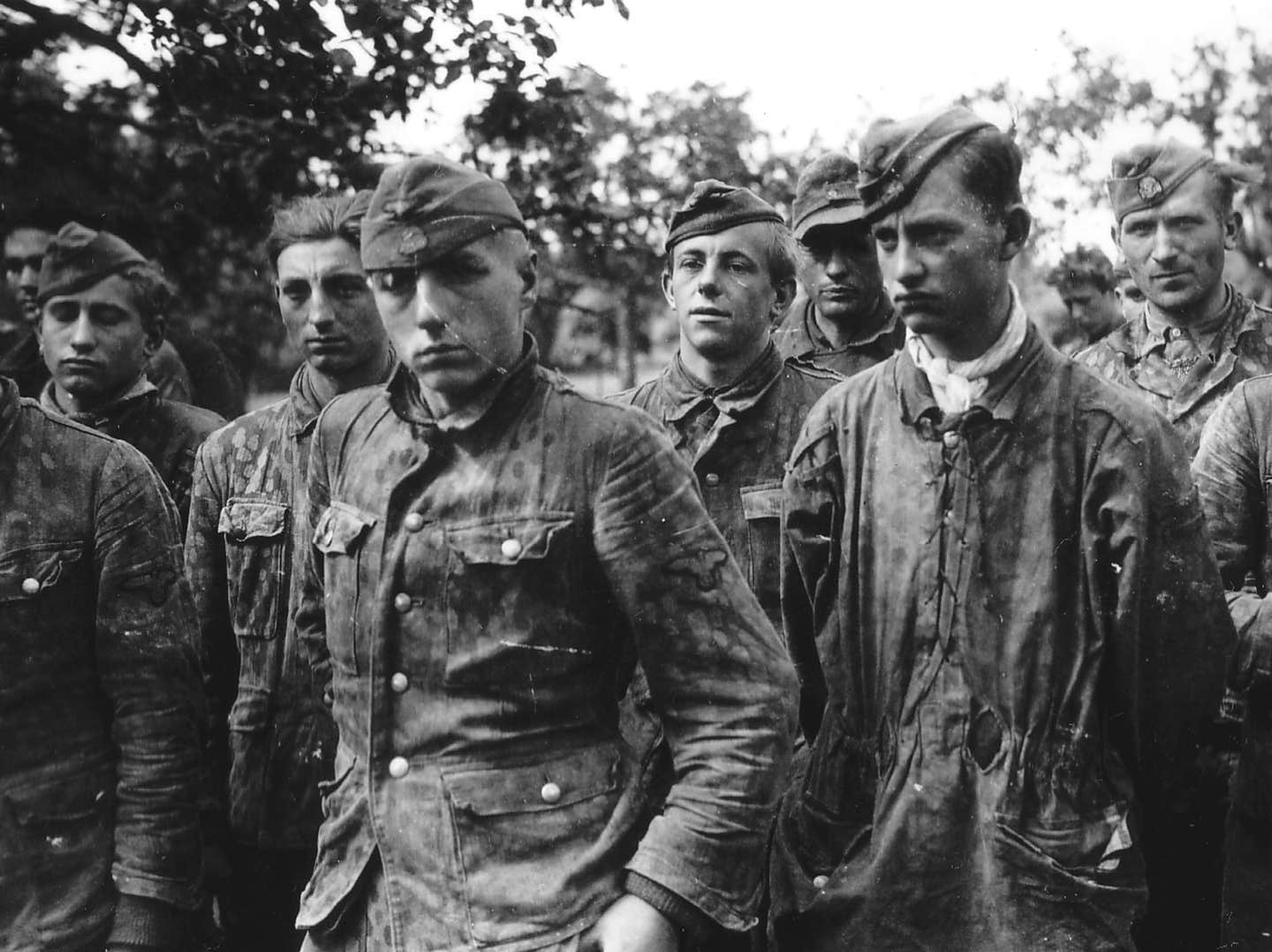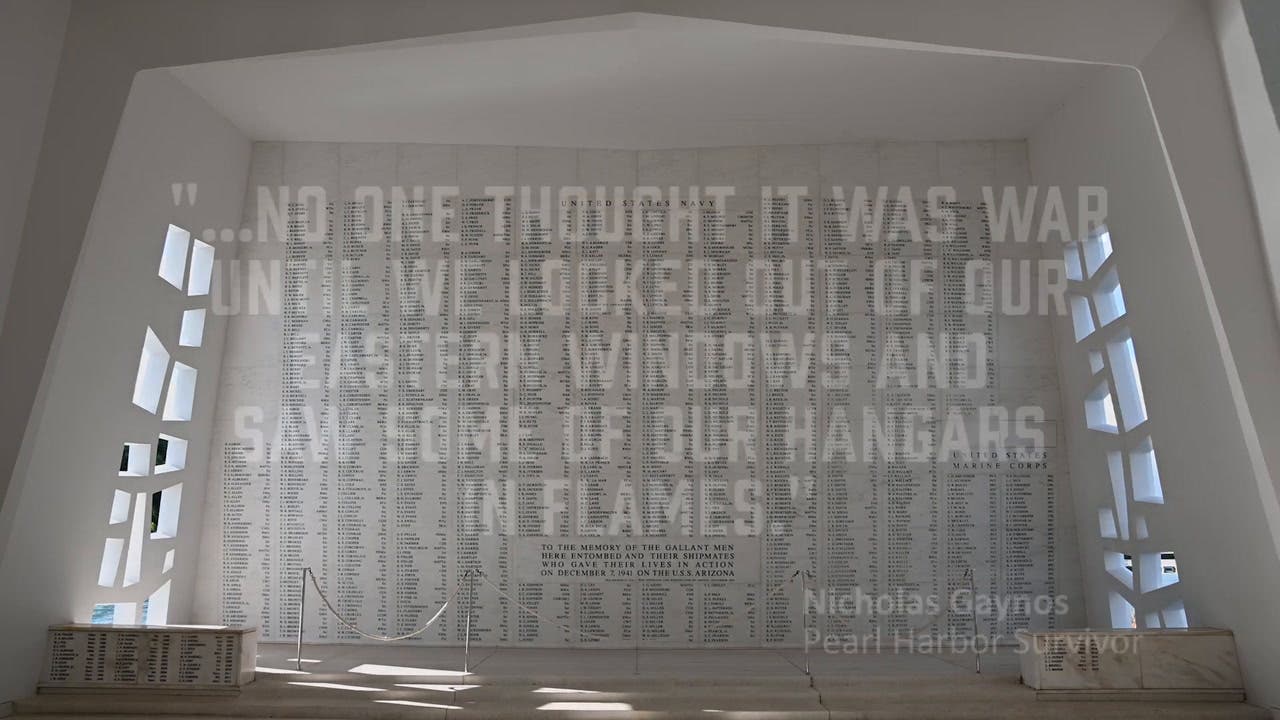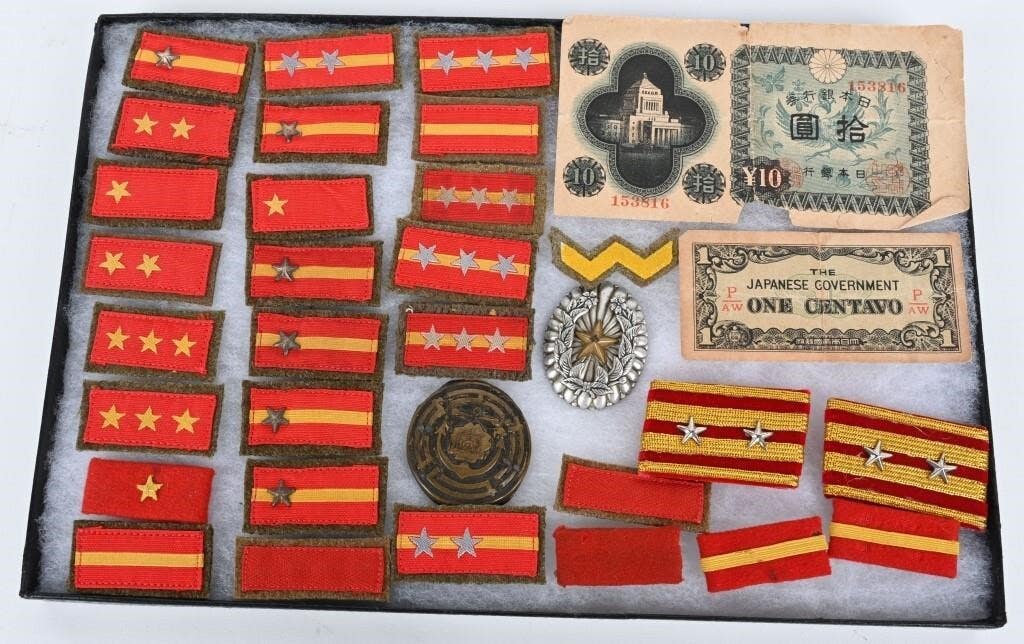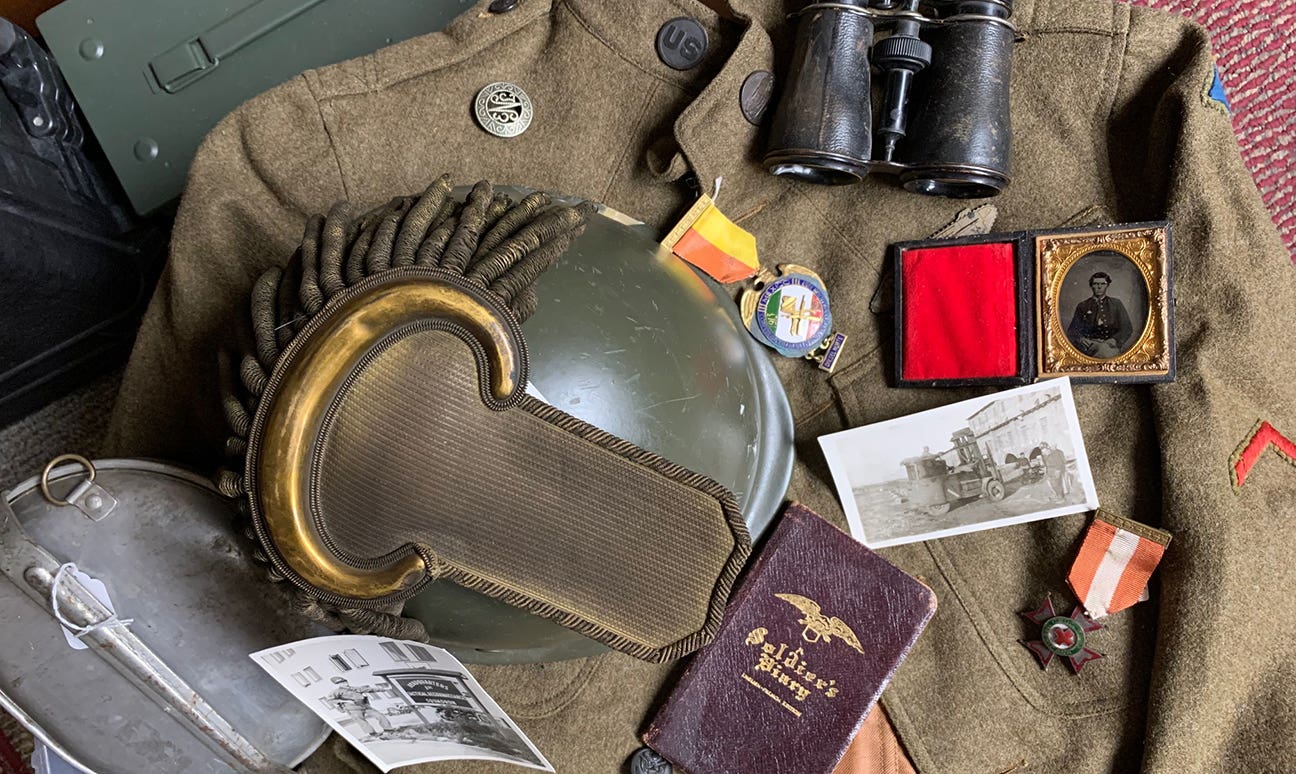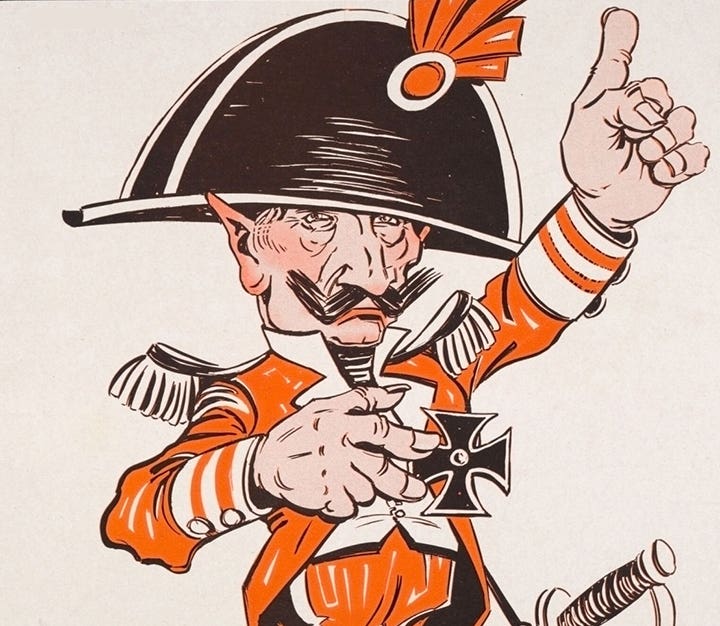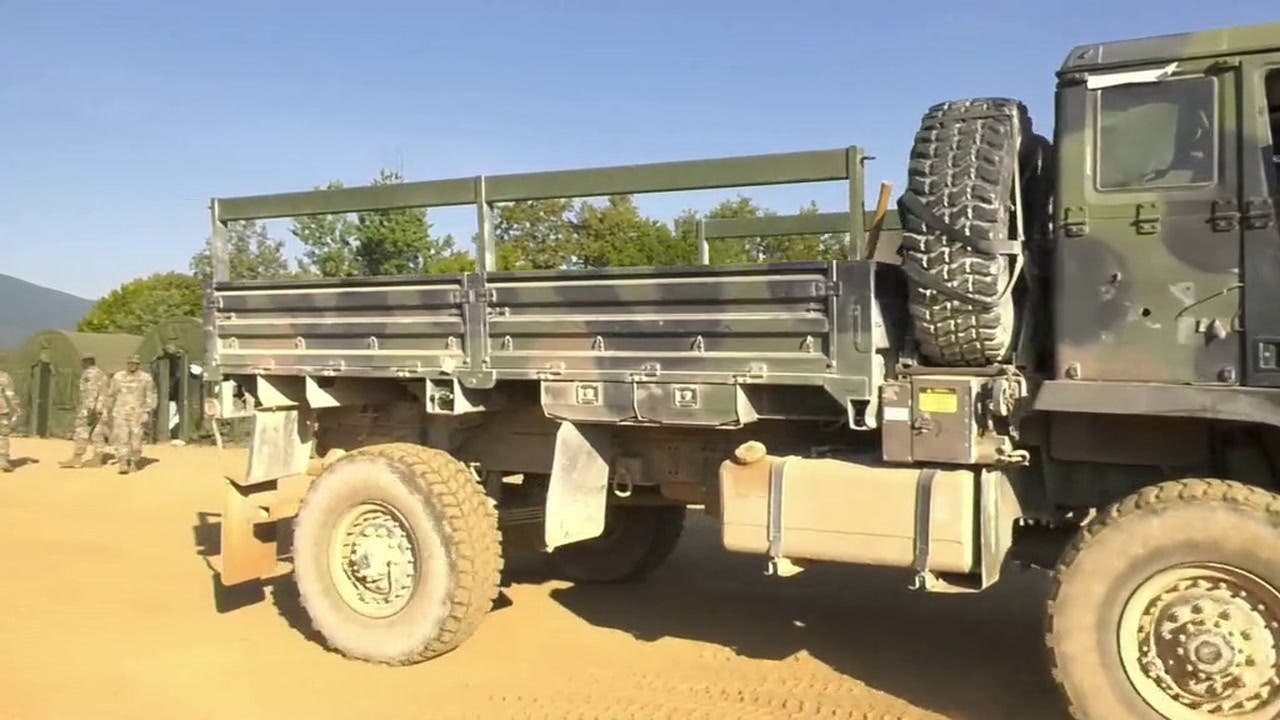Wanna Trade? Not Me!
Standing behind my table at the Show of Shows, I listened as a customer described a WWI Tank Corps photo to me. “He has his cap cocked to one side,…
Standing behind my table at the Show of Shows, I listened as a customer described a WWI Tank Corps photo to me. “He has his cap cocked to one side, his boots are muddy, and he’s holding his .45 in front of his chest. But you know the best thing about it?” he taunted me with the description of what already sounded like a very cool Tank Corps-related photo—one I would happily add to my collection. “He is leaning against is FT light tank!” I was hooked. “How much?” I asked. The guy looked around my table and finally said, “Maybe you can come up with some good Marine photos to trade me for it.”
I couldn’t believe it. What? Are we, ten years old? After a long silence, I finally replied, “Here’s a hundred dollar bill. Whattya say you trade the photo for it?” His reaction? “No, I would rather see what photos you can find to trade.”
MY FIRST TRADE
I hope you don’t misunderstand me—I know a lot of people enjoy the horse-trading aspect of our hobby. I, however, am not one of them. I have learned a couple of lessons about trading: It is always good for the person initiating the trade—they get exactly what they want. It is always bad for the guy on the other end of the trade: He or she spends their time and money acquiring items that they hope will entice the other trader who might—or might not—take the items in trade.
I am not sure when I became opposed to trading, but I suspect it is rooted in my very first trade when I was in Kindergarten. That would have been back around 1969.
That Christmas, Santa Claus brought me an incredibly cool Fort Apache set. The plastic fort with tin lithographed headquarters and two towers came in a big cardboard box illustrated with scenes of Plains Indians attacking the Fort as blue plastic cavalry troopers—and even a few frontiersmen wearing coonskin caps—defended the outpost.
At the age of six, I was already boasting a pretty serious Civil War addiction. Though I loved that Fort Apache set and fought numerous battles, a part of me was left unsatisfied. All of the cavalry troopers, from the saber-wielding mounted officer to the bugler blowing signals with his carbine slung over his shoulder, wore broad-brimmed hats. I tried to bend the side of one or two of the hats up against the crown in an attempt to make them look like M1858 “Hardee” hats (“What was a six year old doing with matches in the basement,” you might ask? I had older brothers who demonstrated lots of plastic bending and melting while they poked holes in models, stretched sprues, or just liked to see ping-pong balls go up in flames).
Despite my efforts to “Federalize” these western-style soldiers, I was unsatisfied. I wanted blue soldiers wearing forage caps (though I used the reenactor term, “kepi,” at the time). To me, nothing said “Civil War” like that feedbag-shaped cap with a leather visor.
When I returned to my classroom after our two-week Christmas break (during which I must have fought twenty or thirty full assaults against Fort Apache), my teacher announced that our new “unit” was going to teach us about “cowboys and Indians” (remember, this was 1969—long before the term “politically correct”). Over the next couple of weeks, we built a teepee out of saplings and brown paper, sang cowboy songs, and brought appropriate paraphernalia from home.
My contribution was a yellow straw cowboy hat (I attached a pair of cut-out paper crossed sabers to the front of the crown), my leather holster, and chrome-plated cap-firing six-shooter. Other kids brought a neat variety of western gear, as well. I recall several leather vests, chaps, and headdresses. Erin Jabe, the six-year-old heart-throb of the class (and daughter of the town’s bank president) even had a leather dress resplendent with fringe and beadwork.
I was in morning Kindergarten—other kids, who I always figured weren’t as smart or cool as us morning kids, showed up at noon and were the “afternoon" class.One Monday morning during this “Wild West” unit, my best buddy, Paul Theobald, walked in carrying a tin box shaped like a suitcase. Scenes of plastic Plains Indians attacking a litho-printed log fort decorated the sides of the “suitcase.” It looked similar to my Fort Apache set. In fact, Paul even referred to his case as “Fort Apache!” How could that be? I had Fort Apache, and it came in a cardboard box.
I really wanted to see inside of Paul’s “Fort Apache,” but first we had to have attendance, say the Pledge of Allegiance, and then do our alphabet drills. It wouldn’t be until 10:30 that morning (after milk and nap) that our class would finally turn our attention back to our “Wild West” unit. Then, I would finally get to see what Paul’s fort was like.
Though it seemed like hours, Wild West time finally arrived. We gathered around our teepee in the center of the room. Our teacher (and the first love of my life), Mrs. Rusert, asked if anyone had anything to share with the class. I looked over to see Paul raise his hand. He moved to the front of the kids (all of whom were sitting with their legs crossed, “Indian-style”—remember, this was before political correctness). I scrunched to the front of the group so I could see as Paul unlatched the tin “suitcase” to unfold his fort. Inside, a jumble of figures awaited sorting into two piles: Tan Indians and blue soldiers.
As Paul pushed the figures into their respective piles, I saw it—the soldiers were wearing forage caps!
Paul and I spent the rest of the hour playing with the set. I am sure, just like a collector, I spoke far too much about “my” Fort Apache. Regardless, I remember being transfixed by the forage cap-wearing cavalry troopers. One, in particular, was comfortably resting his buttocks on his bent leg in a crouched firing position. His cap was tilted with as he aimed down the sights of his carbine.
At 11:30, it was time to clean up and prepare for the bell that would release us from school. Standing in the coatroom along the long row of hooks, I mustered the nerve to ask Paul, “Say, would you like to trade for that cavalry trooper?” He knew which one I meant. The soldier to whom I was referring had been the last man standing after our brief skirmish with the Apaches. Paul said, “Sure, bring one of your men. We can trade.”
CLANDESTINE TROOP TRANSFER
A trade seemed like a great path to finally owning a forage cap-wearing trooper under my command. But, as I walked the three blocks to our store, I started thinking about the logistics: I would have to sneak a soldier out of the house, and I couldn’t really let my brothers or parents ever see the forage-cap wearing soldier. Guilt set in. Was I even committing a sin? I became very unsure about the arrangement.
Normally, before making any sort of money deal, whether a purchase at the Ben Franklin or even buying a Mr. Freeze at the swimming pool concession stand, I would get my Dad’s permission. Usually, he would approve, but every once in a while, he would encourage me to save my money rather than spend it on something he felt would not equal the value of the price paid. I had made this deal with Paul without first consulting with Dad.
Regardless, that evening, I looked over my troops. I finally selected one of the coonskin cap-wearing members. I never really liked him: Anachronist headgear, tomahawk in one hand, and a long rifle in the other. I didn’t understand how he fit into a Civil War-era fort in the first place. I would dump him off on Paul in exchange for a “right-proper” cavalry trooper.
The next morning, I pushed the discharged frontiersman into my pocket, hoping my brothers wouldn’t notice the bulge. I raced to put on my coat in an effort to add another layer of concealment.
I made it to school without being discovered. Waiting outside for the bell to ring, I met up with Paul. We made the swap. He seemed happy with the anachronistic pioneer, and I had a cavalry trooper wearing a forage cap!
I don’t remember much more of that day, but I do recall that first defense of Fort Apache after the trade. Most of the defenders had died within the walls— all but the crouched cavalry trooper. He remained in the brown plastic tower atop the tin headquarters building, firing his Spencers carbine at Indian attackers until not a single renegade was left. While just the lone man left alive in the Fort, a sense of victory swept over the carnage.
About the time the battle ended, Dad began to stir from the couch where he had been reading a book. I quickly mixed my recent transfer into the pile of dead. Dad walked to the kitchen, and I started to return the Fort pieces and figures to the cardboard box. Guilt and shame replaced my victory elation.
I knew I had done something wrong, but wasn’t quite sure what it was. I had a feeling it had something to do with the secrecy of the trade—doing something without first getting my Dad’s opinion or approval. I felt like I broke a bond of trust between him and me, and he didn’t even know it.
But, I was six years old. That guilt washed away quickly (or was probably replaced by something else—I had older brothers who had Playboys hidden in their rooms), but I think it left a stain on my psyche. Since then, I have always had an aversion to “trades.” To this day, my sole idea of trading is, “I will give you this stack of money for that really cool relic.”
Preserve the memories,
John Adams-Graf
Editor, Military Trader and Military Vehicles Magazine
John Adams-Graf ("JAG" to most) is the editor of Military Trader and Military Vehicles Magazine. He has been a military collector for his entire life. The son of a WWII veteran, his writings carry many lessons from the Greatest Generation. JAG has authored several books, including multiple editions of Warman's WWII Collectibles, Civil War Collectibles, and the Standard Catalog of Civil War Firearms. He is a passionate shooter, wood-splitter, kayaker, and WWI AEF Tank Corps collector.



